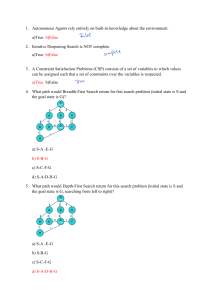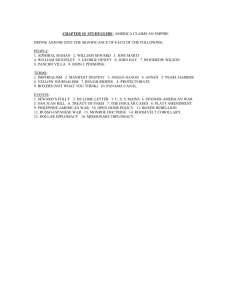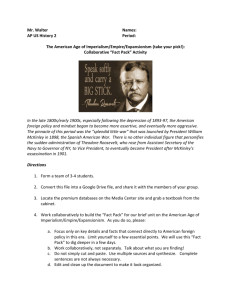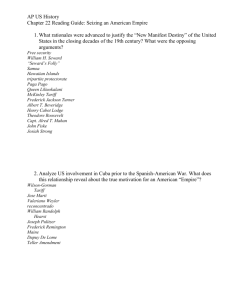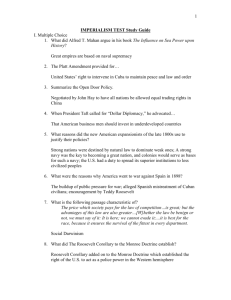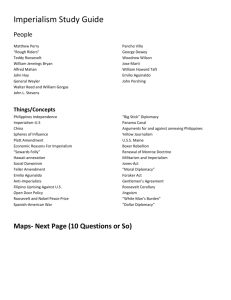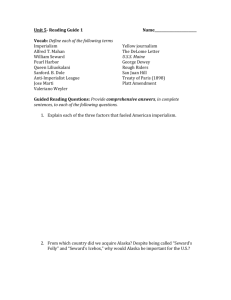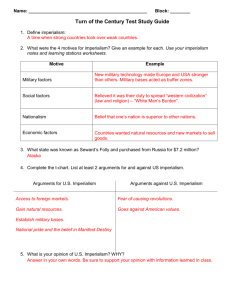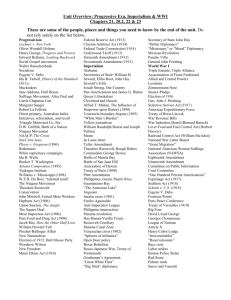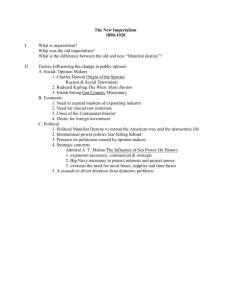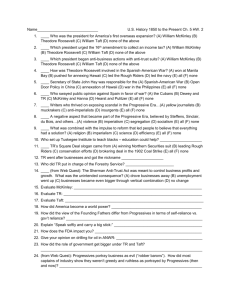CHAPTER 21
advertisement
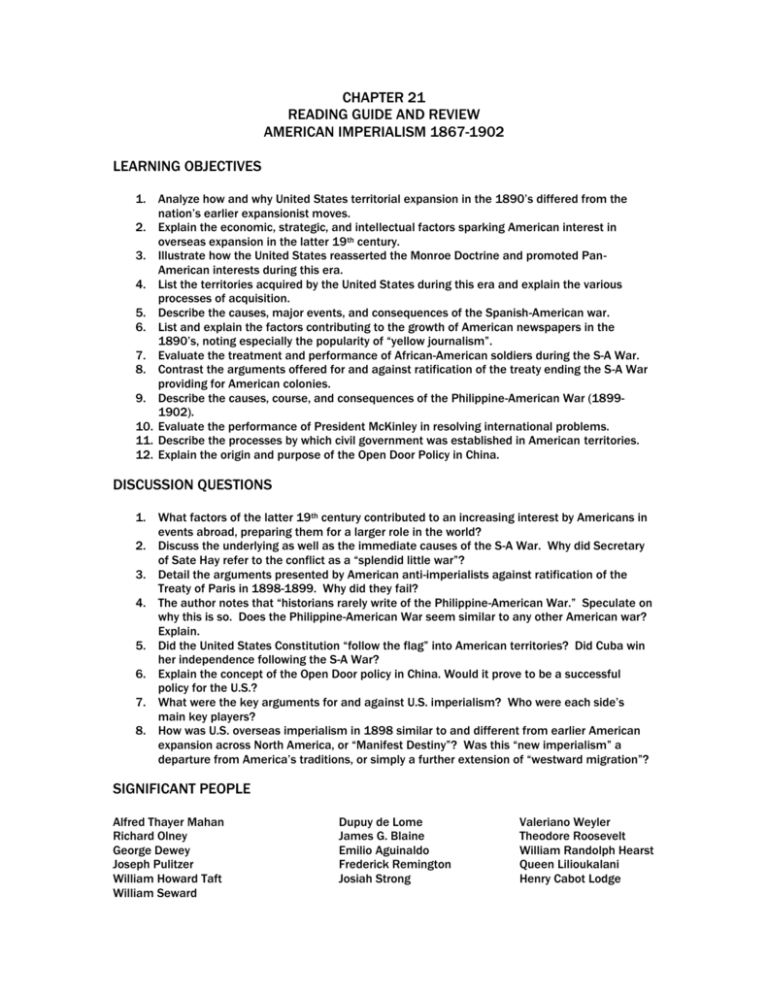
CHAPTER 21 READING GUIDE AND REVIEW AMERICAN IMPERIALISM 1867-1902 LEARNING OBJECTIVES 1. Analyze how and why United States territorial expansion in the 1890’s differed from the nation’s earlier expansionist moves. 2. Explain the economic, strategic, and intellectual factors sparking American interest in overseas expansion in the latter 19 th century. 3. Illustrate how the United States reasserted the Monroe Doctrine and promoted PanAmerican interests during this era. 4. List the territories acquired by the United States during this era and explain the various processes of acquisition. 5. Describe the causes, major events, and consequences of the Spanish-American war. 6. List and explain the factors contributing to the growth of American newspapers in the 1890’s, noting especially the popularity of “yellow journalism”. 7. Evaluate the treatment and performance of African-American soldiers during the S-A War. 8. Contrast the arguments offered for and against ratification of the treaty ending the S-A War providing for American colonies. 9. Describe the causes, course, and consequences of the Philippine-American War (18991902). 10. Evaluate the performance of President McKinley in resolving international problems. 11. Describe the processes by which civil government was established in American territories. 12. Explain the origin and purpose of the Open Door Policy in China. DISCUSSION QUESTIONS 1. What factors of the latter 19th century contributed to an increasing interest by Americans in events abroad, preparing them for a larger role in the world? 2. Discuss the underlying as well as the immediate causes of the S-A War. Why did Secretary of Sate Hay refer to the conflict as a “splendid little war”? 3. Detail the arguments presented by American anti-imperialists against ratification of the Treaty of Paris in 1898-1899. Why did they fail? 4. The author notes that “historians rarely write of the Philippine-American War.” Speculate on why this is so. Does the Philippine-American War seem similar to any other American war? Explain. 5. Did the United States Constitution “follow the flag” into American territories? Did Cuba win her independence following the S-A War? 6. Explain the concept of the Open Door policy in China. Would it prove to be a successful policy for the U.S.? 7. What were the key arguments for and against U.S. imperialism? Who were each side’s main key players? 8. How was U.S. overseas imperialism in 1898 similar to and different from earlier American expansion across North America, or “Manifest Destiny”? Was this “new imperialism” a departure from America’s traditions, or simply a further extension of “westward migration”? SIGNIFICANT PEOPLE Alfred Thayer Mahan Richard Olney George Dewey Joseph Pulitzer William Howard Taft William Seward Dupuy de Lome James G. Blaine Emilio Aguinaldo Frederick Remington Josiah Strong Valeriano Weyler Theodore Roosevelt William Randolph Hearst Queen Lilioukalani Henry Cabot Lodge IMPORTANT TERMS AND EVENTS Imperialism Teller Amendment “yellow journalism” Battle of San Juan Hill Insular cases Treaty of Paris Boxer Rebellion Pan-American Conference Venezuelan Border dispute “Spendid little war” McKinley Tariff Anti-Imperialist League Foraker Act Monroe Doctrine U.S.S. Maine De Lome Letter Rough Riders “Seward’s Folly” Our Country Open Door Policy FOREIGN POLICY OF FOLLOWING PRESIDENTS: Grover Cleveland Theodore Roosevelt (thru 1902) William McKinley CHAPTER 21 QUIZ FEB. 6 & FEB. 7 BONUS: 5 POINTS ON GILDED AGE UNIT EXAM Draw a political cartoon of the Spanish-American War, Teddy Roosevelt, or any other significant event or person from the chapter. There should be a total of 3 cartoons. Cartoons must provide political satire.
